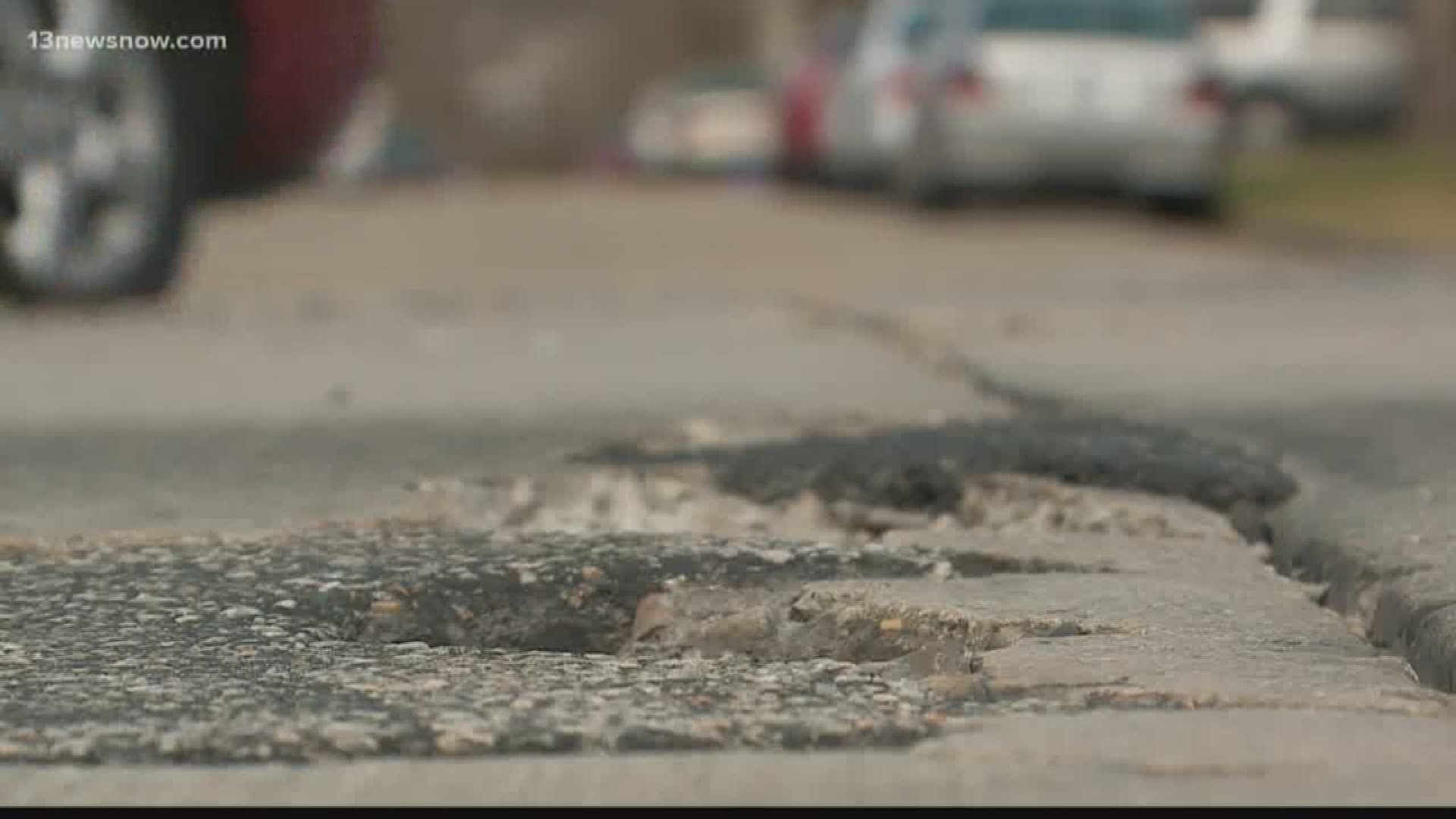NORFOLK, Va. (WVEC) -- As the snow and ice begin to melt, drivers may discover something else the recent snowstorm has brought: more potholes.
Potholes are formed when water seeps into the ground and the road base, eventually making its way into the pavement. When temperatures get cold, that water freezes, expanding within the pavement and pushing it upward.
When the weather gets warmer, the ice melts, leaving behind a bubble in the pavement where the ice once was. When cars drive over those bubbles, they pop, crumbling into a cavity beneath the wheels.
Potholes have cost U.S. drivers about $3 billion a year to their vehicles, according to a 2016 American Automobile Association survey. That's an average repair bill of more than $300, and about 15% of drivers have reported sustaining enough damage to require a repair in the past five years.
Other earlier studies have put the costs as high as $6.4 billion yearly.
Besides avoiding a pothole when possible, you can do the following to minimize vehicle damage before you head out on the road, according to AAA MountainWest:
- Make sure tires are inflated properly and have enough tread; they're the cushion between your wheel's rims and a pothole.
- Slow down, release the brakes and straighten the steering wheel if contact with a pothole is inevitable.
- Remain alert, scan the road and increase the distance between you and the vehicle ahead to look for potholes before it's too late.
Repair of the potholes themselves costs taxpayers hundreds of millions of dollars annually across the USA. A concrete number nationwide is hard to come by because individual cities and counties fix roads in their own jurisdictions, and each state handles higher-volume arteries such as federal highways.
For example, the state of Michigan estimates it spent $8.8 million in fiscal 2013 to repair potholes. Even in a smaller state such as Delaware, officials said they spent $2.2 million in fiscal 2010 to fix potholes. Oklahoma City alone spends $1 million a year to repair as many as 90,000 potholes.
The good news: Potholes can be fixed — with varying degrees of success.
The bad news: They might just be patched until springtime when the continuous freezing and thawing of the ground tapers off and road construction season begins.
To report potholes on state roads or city-maintained streets, click on the appropriate link:
The Indianapolis Star contributed to this report

